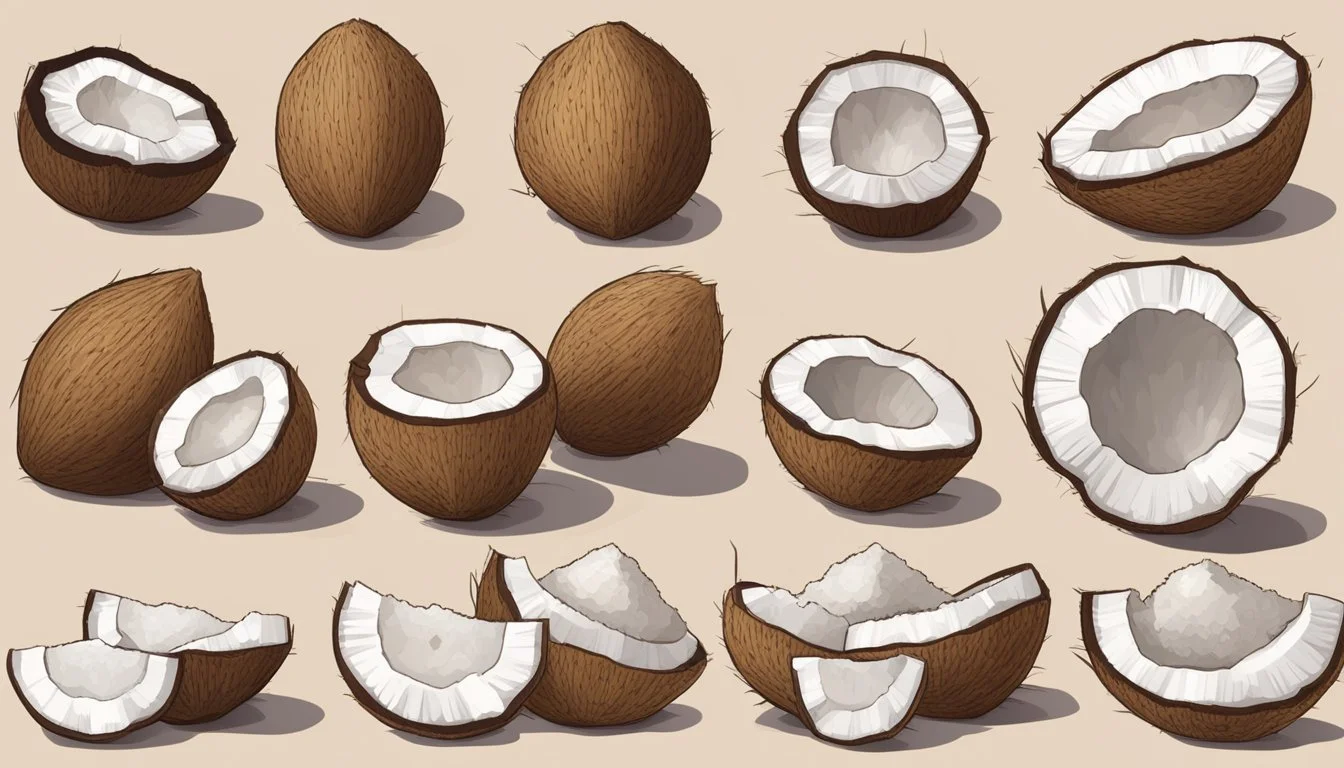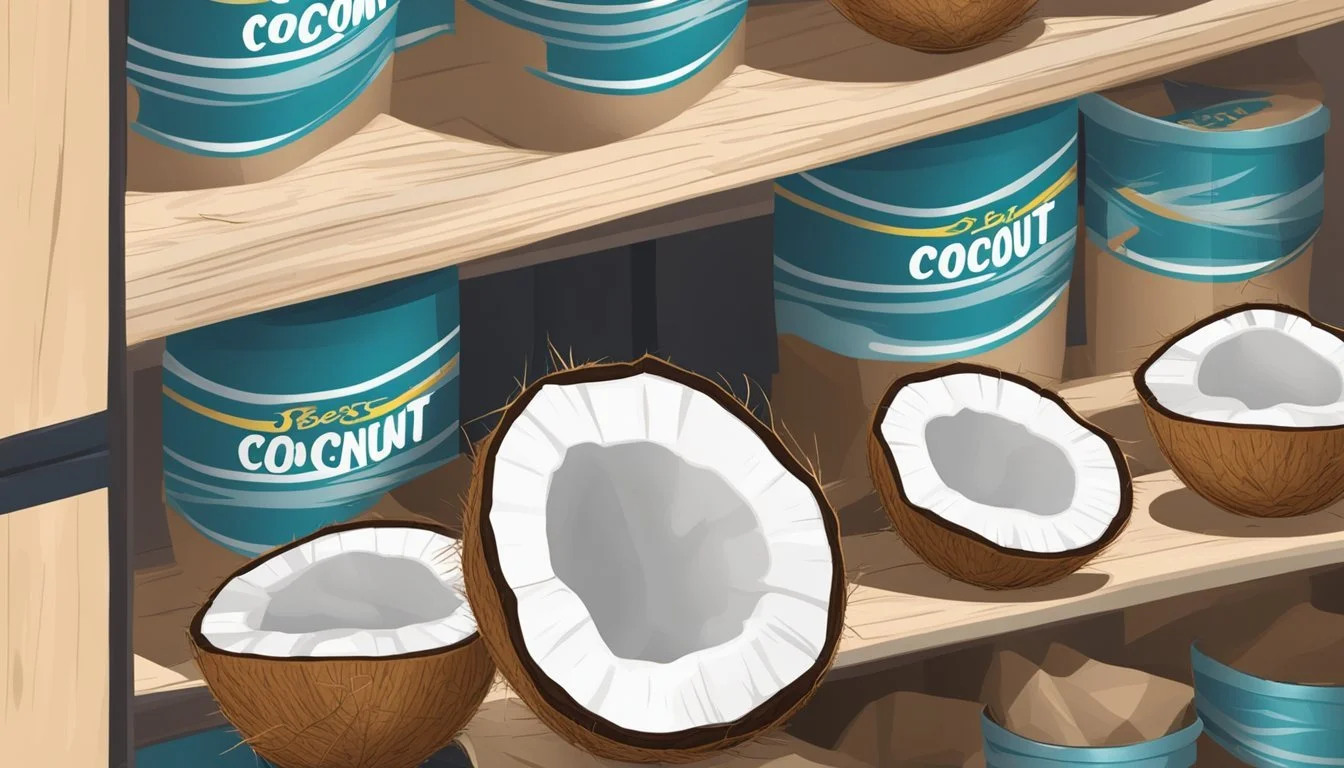Does Dried Coconut Go Bad?
Shelf Life and Storage Tips
Dried coconut, a popular ingredient in many kitchens, indeed has a shelf life and can go bad if not stored properly. Properly stored dried coconut can last up to six months in the pantry and even longer if refrigerated or frozen. Like other food items, factors such as exposure to air, moisture, and heat can significantly reduce its longevity.
When considering whether dried coconut has spoiled, checking for changes in smell, taste, and texture is essential. A sour or rancid odor, off flavors, or noticeable mold growth are clear signs that the coconut has gone bad. Keeping it in an airtight container away from heat sources and in a cool, dry place can help maintain its freshness.
Understanding the shelf life of dried coconut can be crucial for those who use it infrequently. By knowing how to store it properly and recognize signs of spoilage, you can ensure that your dried coconut remains a safe and tasty addition to your recipes.
Composition and Shelf Life of Dried Coconut
The shelf life of dried coconut is influenced by its natural oils and moisture content, which can lead to rancidity and mold growth if not stored properly.
Natural Oils and Rancidity
Dried coconut contains natural oils that can turn rancid over time. When the oils oxidize, they develop an unpleasant taste and smell. This is a key factor in the shelf life of dried coconut.
Storage conditions significantly impact the rate of rancidity. Keeping dried coconut in a cool, dry place can extend its freshness. An airtight container helps protect against exposure to air and moisture, which can accelerate rancidity.
Shelf life estimates:
Pantry: Up to 6 months
Refrigerator: 6-8 months
Freezer: 6-8 months
Check for a sour smell or off-taste to determine if dried coconut has gone rancid.
Moisture Content and Mold Risk
Moisture content is another critical factor for the shelf life of dried coconut. Low moisture levels are essential to prevent mold growth. Dried coconut should be kept away from moisture and sources of heat to minimize this risk.
The presence of mold indicates spoilage and renders the product unsafe for consumption. Use airtight containers and store in a cool, dry place to mitigate the chance of mold forming.
Once opened, dried coconut's moisture content can change, potentially reducing its shelf life to 3-6 months. Vigilant storage practices are necessary to maintain quality and safety.
Optimal Storage Conditions
Storing dried coconut properly is essential to ensure it retains freshness and quality. Maintaining the right environment, including controlling moisture, temperature, and light exposure, plays a crucial role.
Keeping Dried Coconut Dry and Cool
Dried coconut should be stored in a cool, dry place to extend its shelf life. Ideally, storage should occur at room temperature or slightly lower, avoiding locations that experience high humidity or temperature fluctuations.
Airtight containers are recommended to keep out moisture and maintain quality. The refrigerator or freezer offers effective long-term storage options and can significantly prolong freshness.
If refrigeration is chosen, ensure the container is sealed to prevent the absorption of other odors. Freezing dried coconut in a freezer-safe bag or airtight container also works well, extending freshness up to 8 months.
Protection from Air and Light
Exposure to air and light can degrade dried coconut's quality. Using airtight containers is the best strategy to limit exposure to air, which helps prevent the coconut from absorbing moisture and developing off-flavors.
Store these containers in a dark place to protect them from light. Cabinets or pantry areas away from direct sunlight provide an ideal environment.
Avoid transparent containers that allow light to penetrate, opting for opaque ones that shield the contents entirely. This practice effectively preserves the coconut's natural oils and enhances its shelf life.
Signs of Spoilage in Dried Coconut
Dried coconut can spoil if not stored properly. Pay attention to visual and textural changes as well as alterations in smell and taste to determine its freshness.
Visual and Textural Changes
Discoloration is a primary indicator of spoilage. Fresh dried coconut generally maintains a consistent white color. If it starts to turn brown or gray, it should be discarded.
Texture changes are equally important. Dried coconut should have a slightly chewy texture. If it feels excessively dry, hard, or has mushy or slimy bits, these are signs of bacterial or mold growth. Visible mold is a clear sign that the coconut is no longer safe to consume and should be thrown away immediately.
Changes in Smell and Taste
Smell is another critical factor. Fresh dried coconut has a mild, sweet aroma. If it gives off a rancid, sour, or unusual odor, this suggests spoilage.
Taste alterations are equally telling. While the taste test should be a last resort due to potential health risks, a bitter taste instead of the usual sweetness indicates that the coconut has gone bad. Experiencing a rancid taste is a definitive sign that it is no longer safe for consumption. Always prioritize safety by considering smell and other spoilage indicators before tasting.
Effect of Packaging and Handling
Proper packaging and handling play crucial roles in maintaining the quality and safety of dried coconut. These aspects determine how well the product can resist spoilage and contamination.
The Role of Proper Sealing
Proper sealing of dried coconut packages is essential to prevent exposure to air and moisture. Unopened packages that are airtight can protect the coconut from contaminants and bacteria, extending its shelf life. Vacuum-sealed packaging is particularly effective as it eliminates air, reducing the risk of freezer burn if stored in cold environments.
Conversely, improper sealing can lead to the coconut becoming rancid due to oxidation. An airtight seal also prevents the absorption of odors from other foods, helping to maintain the original flavor and aroma. Following storage guidelines for sealed packages ensures the product remains safe and high-quality for a longer period.
Consequences of Frequent Opening
Frequent opening of a package introduces air and moisture each time, which accelerates spoilage. When opened, the dried coconut becomes more susceptible to bacterial growth and contamination. To minimize this, it is important to reseal the package tightly after each use or transfer the coconut to an airtight container.
The refrigerator can help extend the life of opened coconut, but it must be well-sealed to avoid freezer burn. Regularly opening the package allows exposure to condensation, leading to mold growth. Using portions efficiently and limiting the number of openings can significantly reduce the chances of spoilage.
Maximizing the Use of Dried Coconut
Dried coconut is a versatile ingredient that can be utilized in various ways both in the kitchen and beyond. Proper storage methods like refrigeration and freezing can extend its shelf life, ensuring it remains fresh and flavorful.
In the Kitchen
Dried coconut can enhance a wide range of dishes. In baking, it adds texture and flavor to cakes, cookies, and granola. Incorporate it into cakes and baked goods to introduce a subtly sweet, tropical note. For a simple treat, mix with nuts and seeds to create coconut clusters.
In savory dishes, dried coconut is often used in curries and stews. It can be refrigerated or frozen to prolong freshness, keeping it handy for dishes like coconut curry. These dishes benefit from the rich texture and flavor that dried coconut provides when rehydrated.
Beyond Cooking: Other Applications
Dried coconut isn't limited to cooking; it has several non-culinary uses. Coconut oil, derived from dried coconut, is popular in beauty products like hair masks and skin moisturizers due to its nourishing properties.
Environmental uses include making natural potting soil enhancers and eco-friendly scrubbing pads. Coconut flakes can also be used creatively in home crafts, adding a textured element to art projects.
With proper care, dried coconut can be a valuable resource in both culinary and non-culinary contexts.
Understanding Different Types of Dried Coconut
When discussing dried coconut, it's essential to know the differences between shredded coconut and flakes, as well as the impact of sweetened versus unsweetened varieties. Each type has unique properties and uses.
Shredded Coconut vs. Flakes
Shredded coconut and coconut flakes differ in texture and size. Shredded coconut is finely grated and often used in baking and cooking. It's more versatile due to its smaller size, making it easier to blend into recipes.
Coconut flakes, on the other hand, are larger, coarser pieces. These flakes are perfect for topping dishes like granola, desserts, and salads, adding a distinct crunch. Both forms retain the nutritional value of coconuts, providing healthy fats and fiber. When purchasing, opt for organic varieties to avoid added sugars and preservatives.
Sweetened Versus Unsweetened Coconut
The choice between sweetened and unsweetened coconut depends on the intended use and health considerations. Sweetened coconut is often used in desserts where added sugar enhances flavor. However, the extra sugar can alter the nutritional profile, adding calories without significant nutritional benefits.
In contrast, unsweetened coconut maintains the natural taste and health benefits of coconuts. It is a better option for those who are mindful of their sugar intake. Unsweetened varieties are ideal for healthy snacking and cooking, where the natural flavor of coconut can shine through without added sweetness.
Health Considerations and Benefits
Dried coconut offers various health benefits, including valuable nutrients and healthy fats. Understanding these aspects can help you make informed dietary choices.
Dietary Fiber and Nutrients
Dried coconut contains significant amounts of dietary fiber. Just one ounce can provide about 18% of the recommended daily amount (RDA). Fiber supports digestive health by promoting regular bowel movements and preventing constipation.
In terms of nutritional value, dried coconut is also a source of essential nutrients. Though it provides minimal vitamin C, it includes several other vitamins and minerals. The consumption of dried coconut can support overall nutrition by supplying small but meaningful amounts of nutrients from the coconut palm.
Healthy Fats and Organic Options
Dried coconut is rich in healthy fats, specifically medium-chain triglycerides (MCTs). These fats are easier for the liver to metabolize, offering a quick energy source. Including MCTs in your diet can aid in weight management and support metabolic health.
Opting for organic dried coconut ensures you avoid potential pesticides and chemicals used in conventional farming. Organic options can provide the same nutritional profile without the risk of unwanted contaminants. This makes organic dried coconut a beneficial choice for those prioritizing natural and safe dietary options.
Troubleshooting and Tips
To maintain the quality and freshness of dried coconut, proper storage and management techniques are essential. This section provides insights on refreshing dry coconut and identifies suitable substitutes for your recipes.
Reviving Dry Coconut
Dried coconut can become brittle if not stored properly. To refresh it:
Moisturize the dried coconut by sprinkling it with a small amount of water. Let it sit for 15-30 minutes in a sealed plastic bag.
Alternatively, spread the coconut on a baking sheet and lightly mist it with water. Bake at a low temperature (150°F or 65°C) for 10-15 minutes, ensuring not to overheat, as this can affect the flavor and texture.
Proper storage in an airtight container in a cool place can prevent dryness and prolong shelf life.
Suitable Substitutes
If dried coconut is unavailable or unsuitable, several substitutes can be used:
Unsweetened Coconut Flakes: These flakes can offer a similar texture and flavor.
Grated Fresh Coconut: Freshly grated coconut can work in recipes needing moist coconut. Adjust the recipe to account for the extra moisture.
Coconut Flour: While not a direct substitute, it can serve in baking recipes where coconut flavor and texture are desired.
Shredded White Chocolate: For sweet recipes, it can mimic the texture and provide added sweetness.
Using substitutes can maintain the integrity of your recipes while ensuring consistent results.








